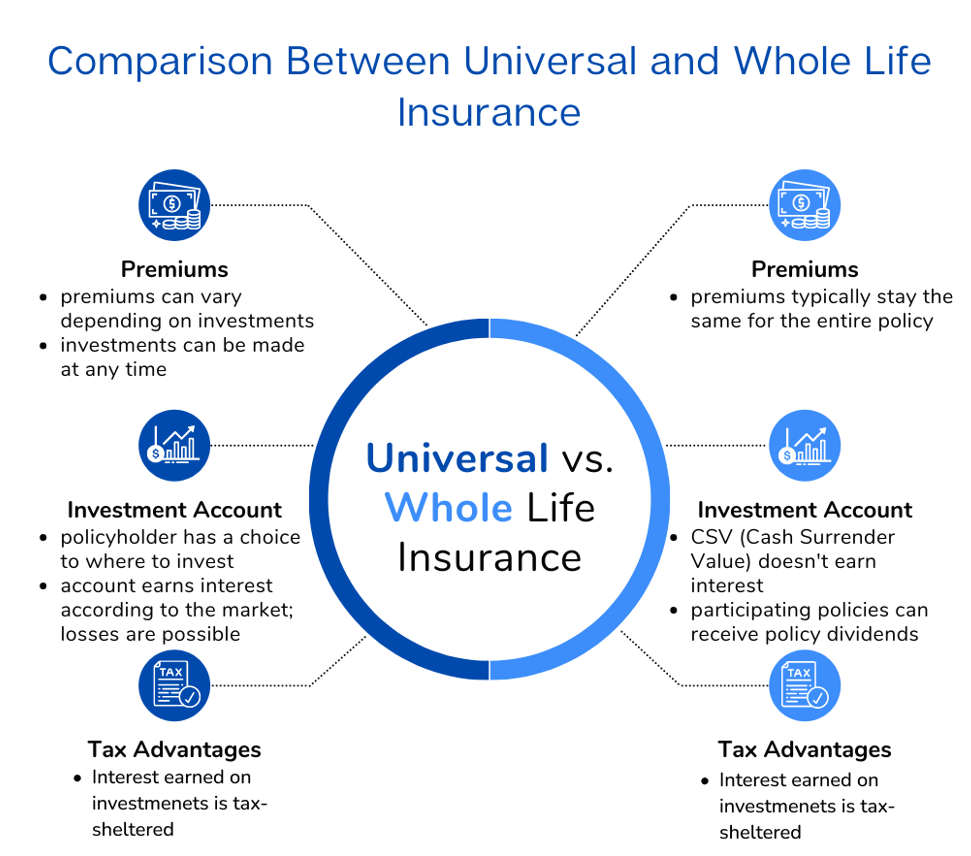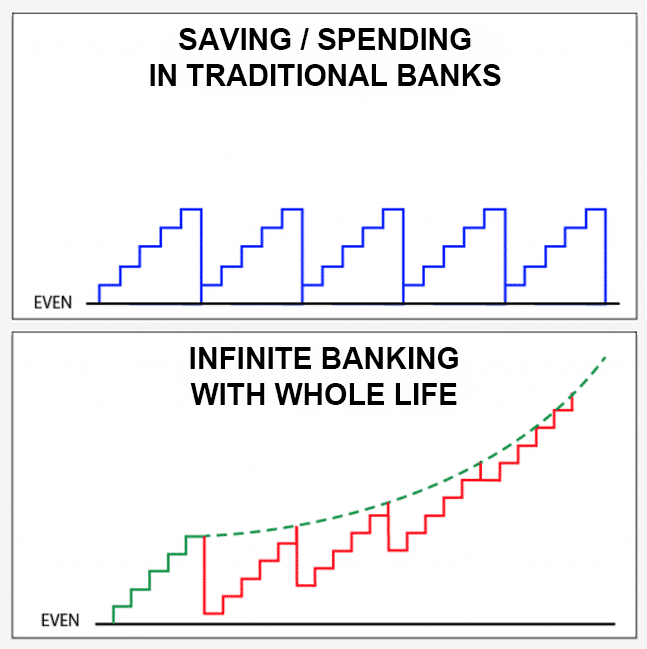All Categories
Featured
Table of Contents
The drawbacks of infinite banking are frequently ignored or not stated at all (much of the information offered concerning this idea is from insurance policy representatives, which may be a little prejudiced). Only the cash worth is growing at the returns rate. You likewise have to pay for the cost of insurance policy, charges, and expenses.

Every long-term life insurance coverage policy is various, yet it's clear someone's general return on every buck invested on an insurance product could not be anywhere close to the reward rate for the policy.
Infinite Banking 101
To offer a really fundamental and theoretical instance, let's presume somebody has the ability to make 3%, usually, for every buck they spend on an "unlimited banking" insurance product (after all expenses and fees). This is double the estimated return of entire life insurance policy from Consumer News of 1.5%. If we assume those dollars would go through 50% in taxes complete otherwise in the insurance product, the tax-adjusted rate of return might be 4.5%.

We assume higher than ordinary returns overall life product and a really high tax price on dollars not put into the plan (which makes the insurance product look much better). The truth for numerous folks might be even worse. This pales in comparison to the lasting return of the S&P 500 of over 10%.
Infinite banking is a great product for representatives that offer insurance coverage, yet may not be ideal when contrasted to the less expensive options (without sales individuals making fat payments). Below's a break down of a few of the other supposed benefits of unlimited banking and why they might not be all they're gone crazy to be.
Infinite Banking Concept Scam
At the end of the day you are getting an insurance policy item. We like the protection that insurance coverage uses, which can be gotten much less expensively from a low-cost term life insurance policy plan. Unsettled finances from the plan may likewise lower your death advantage, lessening an additional degree of security in the policy.
The principle only works when you not just pay the significant costs, but utilize added cash money to acquire paid-up additions. The possibility cost of every one of those dollars is incredible very so when you could rather be investing in a Roth Individual Retirement Account, HSA, or 401(k). Even when compared to a taxable investment account and even a financial savings account, boundless financial might not provide similar returns (compared to investing) and comparable liquidity, access, and low/no cost structure (compared to a high-yield financial savings account).
With the surge of TikTok as an information-sharing platform, financial suggestions and techniques have discovered a novel method of dispersing. One such strategy that has actually been making the rounds is the boundless banking principle, or IBC for short, amassing endorsements from celebs like rap artist Waka Flocka Fire. While the technique is currently preferred, its origins trace back to the 1980s when economic expert Nelson Nash introduced it to the globe.

Within these policies, the cash money value expands based upon a rate established by the insurance provider. Once a substantial cash money worth gathers, insurance policy holders can obtain a cash money worth finance. These finances vary from traditional ones, with life insurance policy acting as security, implying one might shed their insurance coverage if borrowing exceedingly without appropriate money worth to sustain the insurance expenses.
Rbc Private Banking Visa Infinite Card
And while the attraction of these plans is noticeable, there are innate constraints and dangers, requiring attentive cash value surveillance. The method's legitimacy isn't black and white. For high-net-worth people or company owner, specifically those utilizing methods like company-owned life insurance policy (COLI), the advantages of tax obligation breaks and compound development could be appealing.
The attraction of boundless banking does not negate its challenges: Cost: The foundational requirement, a permanent life insurance policy policy, is costlier than its term equivalents. Eligibility: Not everybody receives entire life insurance due to strenuous underwriting procedures that can leave out those with particular health and wellness or lifestyle problems. Intricacy and threat: The complex nature of IBC, paired with its threats, may discourage numerous, specifically when less complex and much less risky options are offered.

Alloting around 10% of your regular monthly earnings to the policy is simply not feasible for the majority of people. Component of what you check out below is simply a reiteration of what has already been stated over.
So prior to you obtain into a situation you're not gotten ready for, recognize the complying with initially: Although the concept is typically offered as such, you're not in fact taking a car loan from on your own - whole life insurance for infinite banking. If that were the case, you would not need to repay it. Instead, you're obtaining from the insurer and need to repay it with interest
How To Have Your Own Bank
Some social media messages advise making use of money worth from whole life insurance to pay down credit history card financial obligation. When you pay back the financing, a section of that passion goes to the insurance policy business.
For the initial a number of years, you'll be paying off the payment. This makes it incredibly difficult for your plan to collect value throughout this time. Unless you can afford to pay a few to several hundred bucks for the next years or more, IBC won't function for you.
Not everyone ought to rely entirely on themselves for monetary protection. If you call for life insurance policy, here are some valuable ideas to consider: Consider term life insurance. These plans provide insurance coverage throughout years with considerable financial commitments, like home mortgages, trainee fundings, or when looking after little ones. Ensure to shop around for the finest price.

Boundless banking is not a product or solution provided by a details organization. Infinite financial is a strategy in which you get a life insurance policy plan that gathers interest-earning cash money value and take out lendings versus it, "borrowing from on your own" as a resource of funding. Then ultimately repay the funding and start the cycle around again.
Pay policy premiums, a portion of which constructs cash value. Take a finance out versus the plan's cash worth, tax-free. If you utilize this principle as intended, you're taking money out of your life insurance plan to purchase everything you 'd need for the rest of your life.
Latest Posts
Infinite Banking Concept
Be Your Own Bank Series
Your Family Bank - Become Your Own Bank - Plano, Tx